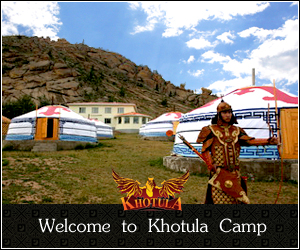Cultural Education and Foreign Relations of Mongol Empire
 Among nomads, the Mongol Empire did not emphasize the importance of ethnicity and race in the administrative realm, instead adopting an approach grounded in meritocracy. However meritocracy was not used with Genghis Khan and his family. The Mongol Empire was one of the most ethnically and culturally diverse empires in history. Because of its enormous size, the Empire consisted of a melting pot of many different cultures. Many of the empire’s nomadic inhabitants considered themselves Mongols in military and civilian life, including Turks, Mongols, and others and included many diverse Khans of various ethnicities as part of the Mongol Empire.
Among nomads, the Mongol Empire did not emphasize the importance of ethnicity and race in the administrative realm, instead adopting an approach grounded in meritocracy. However meritocracy was not used with Genghis Khan and his family. The Mongol Empire was one of the most ethnically and culturally diverse empires in history. Because of its enormous size, the Empire consisted of a melting pot of many different cultures. Many of the empire’s nomadic inhabitants considered themselves Mongols in military and civilian life, including Turks, Mongols, and others and included many diverse Khans of various ethnicities as part of the Mongol Empire.
Foreign Relations
The creation of the Great Mongol State opened up trade and commerce on a scale almost never seen before. These trade routes were used by not only traders but also dignitaries and missionaries. Two of the most famous travelers to visit the Mongol Empire, and among the first were Giovanni da Pian del Carpine and Marco Polo. They both made the long journey from Italy and recorded their respective journeys in books. Marco Polo’s most well known book is “The Travels of Marco Polo”. Carpine’s most famous book was “Historia Mongolorum”.
Marco Polo’s Travel Notes
Marco Polo was born in 1254 in Italy. Together with his father and uncle, he was one of the first westerners to travel into the Mongol Empire and visit with the Great Khan, Kubilai. His notes about Mongolia:
In Asia and Eastern Europe scarcely a dog might bark without Mongol eave, from the borders of Poland and the Gulf of SKhanderoon to the Amur and the Yellow Sea. The vast empire which Genghis had conquered still owned a nominally supreme head in the Great Khan, but practically it was splitting up into several great monarchies under the descendants of the four sons of Genghis, Zuchi, Tsagaadai, Ogodei, and Tului; and wars on a vast scale were already brewing between them. Hulaku, third son of Tului, and brother of two Great Khans, Mongke and Kubilai, had become practically independent as ruler of Persia, Babylonia, Mesopotamia, and Armenia, though he and his sons, and his sons’ sons, continued to stamp the name of the Great Khan upon their coins, and to use the Chinese seals of state which he bestowed upon them. The Seljukian Sultans of Iconium, whose dominion bore the proud title of Rum (Rome), were now but the struggling bondsmen of the Ilkhans. The Armenian Hayton in his Cilician Kingdom had pledged a more frank allegiance to the Tartar, the enemy of his Moslem enemies.”
About meeting Khublilai Khan
“When the Two Brothers got to the Great Kaan, he received them with great honour and hospitality, and showed much pleasure at their visit, asking them a great number of questions. First, he asked about the emperors, how they maintained their dignity, and administered justice in their dominions; and how they went forth to battle , and so forth. And then he asked the like questions about the kings and princes and other potentates.”
About serving the Great Khan
“When that Prince, whose name was Kubilai Khan, Lord of the Tartars all over the earth, and of all the kingdoms and provinces and territories of that vast quarter of the world, had heard all that the Brothers had to tell him about the ways of the Latins, he was greatly pleased, and he took it into his head that he would send them on an Embassy to the Pope. So he urgently desired them to undertake this mission along with one of his Barons; and they replied that they would gladly execute all his commands as those of their Sovereign Lord.”
Plano Carpini’s Notes
Giovanni da Pian del Carpine, or John of Plano Carpini (1180-1252) was one of the first Europeans to enter the court of the Great Khan, Khubilai of the Mongol Empire and the author of the earliest important Western work on northern and central Asia, Russia and other parts of the Mongol Empire. His notes on the Mongol Empire:
“But as Genghis Khan returned out of that country, his people wanted victuals, and suffered extreme famine. Then by chance they found the fresh entrails of a beast: which they took, and casting away the dung thereof, caused it to be sodden, brought it before Genghis Khan, and did eat thereof. [The law of Genghis.] And hereupon Genghis Khan enacted: that neither the blood, nor the entrails, nor any other part of a beast which might be eaten, should be cast away, save only the dung. Wherefore he returned thence into his own land, and there he ordained laws and statutes, which the Tartars do most strictly and inviolably observe, of the which we have before spoken. [The death of Genghis. His sons.] He was afterward slain by a thunderclap. He had four sons : the first was called Ogodei, the second Thossut Khan, the third Thiaday: the name of the fourth is unknown. From these four descended all the dukes of the Mongols. [Side note: His grand children.] The first son of Ogodei is Cuyne, who is now Emperor: his brothers are Cocten and Chyrinen. The sons of Thossut Khan are Bathy, Ordu, Siba, and Bora Bathy, next unto the Emperor, is richer and mightier then all the rest. But Ordu is the seignior of all the dukes. The sons of Thiaday be Hurin and Cadan. The sons of Genghis Khan his other son, whose name is unknown, are Mengu, Bithat and certain others. The mother of Mengu was named Seroctan, and of all others most honored among the Tartars, except the Emperors mother, and mightier than any subject except Bathy. [The Tartarian Dukes.] These be the names of the dukes: Ordu, who was in Poland and in Hungary : Bathy also and Hurin and Cadan, and Siban, and Ouygat, all which were in Hungary. In like manner Cyrpodan, who is as yet beyond the sea, making war against certain Soldans of the Saracens, and other inhabitants of far countries. Others remained in the land, as namely Mengu, Chyrinen, Khubilai, Sinocur, Caray, Gay, Sybedey, Bora, Berca, Corrensa. There be many other of their dukes, whose names are unknown unto us.”













THIS HAS WAY TO MUCH INFO! I mean I am doing a project and I don’t want to read all that…